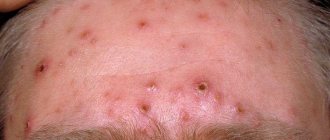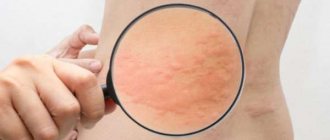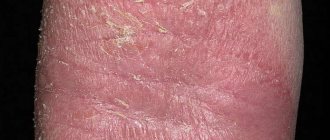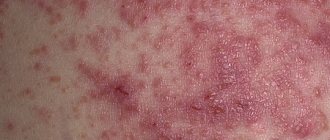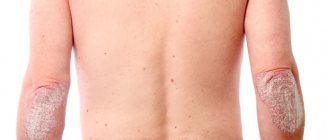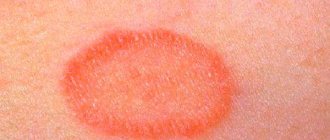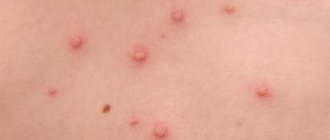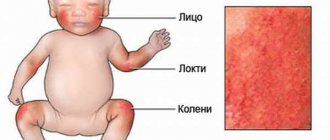Chickenpox is an acute infectious disease caused by viruses of the herpes family. A distinctive feature is rashes on the skin in the form of small blisters. It is very important not to let the person scratch the resulting blisters, as this may leave scars.
Children, as a rule, tolerate the disease much easier than adults, in whom it can cause various complications. The typical category of people affected by the virus are children from 1 to 10 years of age, but the peak of the disease in the human population occurs at the age of 4 years.
A person can get chickenpox only once and then develop strong immunity for the rest of his life. With chickenpox in children, the first symptoms begin 1-3 weeks after infection, on the first day the temperature begins to rise, after which specific rashes appear on the body - this is the initial stage of chickenpox, treatment of which must be started in a timely manner.
How does the disease begin?
Chickenpox is called that way because it can be spread by the wind, that is, by airborne droplets. Let's figure out how it manifests itself in children. Someone sneezes contagiously next to you, you will already forget about this insignificant episode in your life. And after 1-3 weeks the temperature suddenly rises. This is the initial stage of chickenpox in children (see photo).
And if it weren’t for the almost simultaneous appearance of the rash, this illness could be mistaken for an acute respiratory infection; besides, the symptoms of chickenpox include headache and a feeling of weakness. Now you know how the disease begins.
Features of treatment in adults
In adults, purulent chickenpox is much more complicated than in children. It is almost always accompanied by headache, high fever, weakness and severe itching of the skin. With chickenpox in adults, purulent pimples appear all over the body. Including on the face, head and mucous membranes.
Treatment is not much different from children's and is based on taking antibiotics throughout the week. Also, stronger painkillers and antipyretics are prescribed for adults.
Chickenpox in adults most often leads to complications for the following reasons:
- in the hot season, when scratching, along with sweat, an infection gets into the wound, which leads to the appearance of festering pimples all over the body;
- weakened immune system;
- chronic diseases acquired before infection with the virus;
- complication after improper treatment.
In this case, the liquid in the vesicle first begins to become cloudy, and then an abscess forms. After a certain time, the abscess decreases in size, turning into a brownish crust. Only 8 days after the appearance of the rash begins to fall off.
Symptoms of chickenpox in children
In the case of chickenpox, the symptoms in children cannot be confused with any other disease, since they appear in all their glory in a very short time. The main symptoms of chickenpox are:
- Chickenpox usually begins with fever, trembling, heat and general malaise.
- Flat rashes all over the body (except for the palms and feet), which quickly cover the body (within 1-2 hours). Specks the size of a pea or millet grain, pink in color. At this stage, the rash does not cause discomfort to the child or adult.
- After a few hours, a small bubble appears in the center of the spots, with transparent contents inside. The most unpleasant thing is that when bubbles appear, the child begins to itch and tries to scratch them. Here it is important to ensure that the person stops scratching the affected skin, as it can cause an infection.
- After 1-2 days, the bubbles dry out and become covered with a brown crust. However, at the same time, over another 7-10 days, new rashes appear at intervals of 1-2 days, which are again accompanied by a rise in temperature.
- In adults, pustules of rashes take a long time to become wet, ulcers form, which take a long time to heal, forming scars.
- At the end of the rash, the crusts disappear within 1-2 weeks, after which slight pigmentation remains, disappearing over time. If there were complications during the disease, for example, a pyogenic infection, then small scars remain on the skin.
All these signs are characteristic of chickenpox and occur in most children (no matter how old they are). It is extremely important to recognize its symptoms in the first days of the development of the disease in order to consult a doctor as soon as possible and begin treatment.
It is important not to confuse the sore with a common cold, which occurs quite often in children and has similar symptoms (fever, weakness, headache). As soon as you notice the first rashes on the child’s body and other symptoms of chickenpox, you should immediately contact a specialist. The doctor will conduct a differential diagnosis and tell you how to treat chickenpox at home.
In children, the disease occurs in a simpler form than chickenpox in adults, who may suffer from complications in the future.
Where does the chickenpox rash appear and on what day?
photo rash with chickenpox
For each infectious disease, its typical course is characterized by a number of specific features, and chickenpox is no exception.
Description of the typical course of a chickenpox rash is characterized by the following:
- The incubation period - the time from the moment of contact with the patient until the appearance of the first rash - lasts from 11 to 21 days, so it is possible to analyze the history and compare the data. With other viral infections, the incubation period is usually much shorter. Many people are concerned about what day the rash appears after infection. The time of its appearance is completely determined by the state of immunity and the presence of aggravating factors. The first acne with chickenpox may appear within a period equal to the incubation period.
- The prodrome period - chills, weakness, headache, fever - lasts from several hours to a day. The prodromal stage precedes the appearance of the first rash and fever. In most viral infections, it proceeds the same way and is not an object for comparison and difference. But chickenpox is characterized by one feature that distinguishes the prodrome from other similar stages. A distinctive feature of chickenpox is the so-called resh - a previous rash similar to that characteristic of scarlet fever or measles. Spots and papules are randomly scattered throughout the body .
- After a short-term prodrome, an acute period of the disease begins. The temperature rises to 38.5°C - chickenpox is not characterized by a very high temperature, however, the infection is described by an abnormal manifestation of fever. If with other viral infections the fever manifests itself in the evening or at night, or remains stable for 3-5 days at very high levels, then with chicken pox the temperature rises with new rashes.
- The first day of the rash coincides with a rise in temperature to high numbers.
- The nature of the rashes with chickenpox is described by the lack of phasing: the rashes appear randomly in different places of the body. Where do the first rashes appear with chickenpox? Chickenpox is characterized by the following anatomical areas: face, scalp, torso, limbs. The rash on the palms and soles may be sporadic. The mucous membrane of the oral cavity and genital organs is affected more often in the moderate form. The mild type of rash in the mouth is sporadic and mildly painful.
- Itching is characteristic.
Important
The first rash with chickenpox is a small pink spot that transforms into a blister.
Chickenpox treatment
For chickenpox, treatment in children is mainly symptomatic - skin rashes and accompanying symptoms are treated: external agents are used to relieve pain and disinfect the rash, antipyretics and analgesics are used. Treatment is accompanied by antihistamines that relieve swelling and pain.
In severe general condition and severe skin manifestations, hospitalization may be required, especially if symptoms from the nervous system appear (pain radiating to the legs, severe headache) or if the patient finds it difficult to breathe.
An approximate treatment regimen for chickenpox is as follows:
- Liquid bubbles must be lubricated several times a day with brilliant green or medicinal colorless liquid of Casteliani. This promotes rapid drying of the blisters and further formation of crusts that precede healing. In addition, this prevents the spread of infection throughout the body (see how to apply chickenpox other than brilliant green).
- Relief of symptoms, including itching. For this purpose, systemic antihistamines are used, which, however, are becoming less popular today, since inhibition of the immune response is believed to lead to complications. For general symptoms of inflammation, they also try to alleviate the patient’s condition - relieve pain and fever, for which NSAIDs are recommended: paracetamol or ibuprofen.
- To reduce the temperature, you should take some antipyretic drugs, for example: Panadol (Paracetamol), Nurofen, Efferalgan. Aspirin is not recommended, especially for children under 10 years of age.
- Also, in order to quickly cure chickenpox, you should adhere to bed rest for the period of intoxication and high temperature.
In developed countries, instead of aniline dyes, calamine lotion is used in combination with antihistamines, which helps soothe the skin. The lotion is a mild antiseptic, dries out new blisters and promotes faster healing, and also protects the skin from irritating factors. Cools and soothes scratched areas, reducing the risk of scars and scars. It is clinically tested and certified in the Russian Federation.
What does chickenpox look like?
The main symptom by which you can understand what chickenpox looks like (photo 4) is a rash. At first, these are ordinary red spots of small size and round shape. The early stage of chickenpox first appears on the head and abdomen. As a result, the spots turn into papules (this is what pimples with chickenpox are called). The center of the area of reddened skin rises, and a blister filled with clear liquid forms.
The chickenpox rash subsequently transforms from a papule into a vesicle with purulent contents. Itching appears, which accompanies the process of opening acne. The next sign of how chickenpox manifests itself is ulceration of the papule with the formation of a scab or other crust. But this happens at a later stage.
Is it possible to get sick a second time?
The chickenpox virus belongs to the group of herpes viruses. And in fact, after suffering (usually in early childhood) an illness, it does not disappear from the body, but “falls asleep” in the hidden areas of the spinal cord - the nerve ganglia.
The virus can wake up due to a general decrease in immunity. Sometimes it gives the same symptoms as with classic chickenpox, sometimes it provokes the so-called herpes zoster (when the rash protrudes along the ribs - along the nerves).
Results
The main cause of the disease is a viral infection. It is quite possible to avoid negative consequences by following the simple recommendations of experienced specialists. If you take medications on time, do not scratch the rash, carefully monitor personal hygiene, and also follow a special diet, the disease will certainly recede. Particular attention to preventive measures against chickenpox should be given to pregnant women to eliminate the risk of serious consequences for the unborn child.
Almost every mother knows what chickenpox looks like. This disease is one of the most common childhood infections. The initial stage of chickenpox is characterized by specific rashes.
Graft
The vaccine sufficiently protects against chickenpox and its complications. It is recommended for children 12 months of age and older, as well as for adolescents and adults who have not previously had chickenpox or been vaccinated. The vaccine protects against the disease for 10 years or more. In rare cases, people who have received the chickenpox vaccine may get chickenpox, but the illness will be mild.
Currently, in the USA, Japan and some other countries, this vaccination is mandatory for admitting a child to a preschool institution. But in Russia, vaccination of children against chickenpox has not yet become widespread, and this remains the choice of parents.
It is worth noting that some people with weakened immune systems (due to illness or taking medications that affect the immune system) should not get vaccinated, as they may develop complications. Therefore, before receiving the vaccine, a patient with a weakened immune system should consult a doctor.
(Visited 41,132 times, 1 visits today)
Acne treatment
It is quite possible to avoid the appearance of scars. To do this, you must follow several important rules, namely, do not scratch the wounds left by acne, and strictly follow the doctor’s instructions. To disinfect and speed up the healing of blisters, it is necessary to use brilliant green. It is applied with a cotton swab with careful movements so as not to injure the already formed crusts.
As an alternative, Panthenol in the form of a spray can be used. It also disinfects and can even temporarily eliminate itching. But, if there are a lot of acne, then the doctor may prescribe special medicinal ointments to reduce the intensity of the rash. If you lubricate the affected areas with Gerpervir or Acyclovir, the risk of getting scars after chickenpox is significantly reduced.
Important! To prevent and eliminate the appearance of purulent pimples, chickenpox requires timely treatment of the affected areas with solutions with antiseptic properties.
In addition to brilliant green, doctors often recommend a solution of manganese, boric acid or Furacilin. Calamine lotion helps well, as it not only has an excellent antiseptic effect, but also relieves itching well. This way, pimples will heal quickly and will not cause discomfort in the form of unbearable itching.
Complications from chickenpox
Children with oncology, HIV-positive status, and congenital pathologies of the immune system have a difficult time coping with the disease. Intense fever, intoxication of the body, extensive rashes on the skin - all elements of the disease are more pronounced.
If a pregnant woman gets chickenpox in the first 12 weeks of pregnancy, the baby may experience serious developmental pathologies.
A child born with chickenpox syndrome may have the following developmental disorders:
- underdevelopment of the limbs;
- problems with brain activity;
- growth deficit;
- malformations of the eyes;
- the skin is covered with scars;
- vestigial fingers.
Chickenpox in the second or third trimester of pregnancy is transmitted by the fetus in utero and can provoke herpes zoster at any age.
Children whose expectant mothers are infected 1-3 weeks before birth have a favorable prognosis, since the child has time to receive a certain amount of antibodies, and the disease will be easier. Infection during childbirth causes a severe course of the disease, leading to death in every fifth newborn.
Possible complications of the disease in children and adults:
- purulent processes due to infection;
- kidney inflammation;
- pneumonia;
- brain damage (encephalitis);
- Reye's syndrome (acute hepatic encephalopathy) can be a consequence of taking aspirin.
Important to remember! Any disease can lead to complications, so you need to be careful about your health and the health of your child, and carry out correct and timely therapy.
Gradual development of symptoms
The initial signs are a rash of chickenpox, which occurs against the background of an increase in temperature and deterioration in health. The first pimple may appear on the back, face or stomach. More often, spots and nodules appear on closed parts. In rare cases - on the upper and lower extremities. 2 hours pass and the rash covers large areas of the baby’s body.
On the second day the temperature returns to normal and weakness disappears. In the future, the pathology occurs only with rashes.
Features and types of rashes with chickenpox:
- at first they look like transparent water drops;
- the lower part of each pimple has a scarlet rim, there may be swelling;
- on the skin you can see a fresh rash that has just begun to ripen, and dried sores covered with brown crusts.
The rash begins in one area and then appears throughout the body. In this case, the skin is constantly covered with blisters. Waves of new rashes follow each other. New pimples may appear on the skin within 9 days. A person remains contagious, potentially dangerous to other children, for another 5 days after the last neoplasms have appeared on the skin and mucous areas.
In young children, neoplasms on the skin last 4-8 days. Then recovery occurs. The yellow-brown crusts that cover the areas where there were previously blisters disappear on their own after 7 days. There is no trace left if you protect the child from scratching during severe itching.
How to distinguish chickenpox from allergies
If you start to peel off the scabs ahead of time, a “pockmark” may appear, which will be visible on the skin throughout the rest of your life.
In an infant, chickenpox manifests itself:
- a sharp rise in temperature;
- pain in the limbs and muscles - the child will cry a lot, twitch his arms and legs if you touch them;
- irritability, tearfulness, weakness, apathy;
- decreased appetite or complete refusal of breast milk or formula;
- rashes that will cover the entire body, except for the feet and palms.
The most unpleasant sign of pathology is itching. When the blisters form, grow, and burst, the whole body begins to itch very much. It is difficult for an adult to resist, and it is even more impossible for children to do this. It is especially dangerous when the pathology develops in a one-year-old child, to whom it is difficult to explain that it is impossible to scratch pimples or pick off scabs from the skin.
When actively scratching, an outpouring of serous fluid occurs. This allows the virus to infect new areas of the skin. The person continues to become infected.
There may be 100 or more blisters, which are characterized by disturbing itching. The form of chickenpox varies in intensity.
The spread of chickenpox in children's groups
As a rule, a child gets chickenpox in kindergarten, but, according to statistics, they also catch the infection at school (students who are under 10 years old are susceptible to chickenpox). The incubation period in children is 14 days (in adults it lasts up to 23 days). The itching condition is usually mild. But to prevent the baby from wanting to scratch the rash, doctors prescribe antihistamines that relieve itching.
Medical practice confirms that all people become infected in childhood. But parents whose children were spared the disease are not interested in the question of what acne looks like in children with chickenpox in preschool age. It may seem that the body is well resistant to chickenpox when the body of a baby who has been in contact with sick peers is not covered in rashes. How is this possible? Against the background of strong immunity, infection occurs without visible symptoms. This factor is due to the fact that a strong body can easily cope with a small dose of the virus. Therefore, sometimes one gets the impression that a child has not become infected when the majority of children in the team have gotten sick.
What is chicken pox
Varicella (also known as chickenpox) is a highly contagious infectious disease that occurs only in humans.
The causative agent of the infection is the herpes zoster virus (a type of herpes virus type 3), which can travel long distances with air currents.
Infection occurs by airborne droplets, and the virus enters the body almost instantly.
The main symptom of chickenpox is a blistering rash (for those who don’t know what acne looks like with chickenpox, photos in children and adults can be seen below).
Photo: chickenpox rash
The virus is transmitted from a sick person to a healthy person 2 days before the onset of the rash and for 4 days after the appearance of the last pimple.
Anyone who has had the infection develops a strong immunity to the chickenpox virus that lasts throughout life.
Similar, but not the same rashes can appear with enterovirus infection, allergies and dermatitis, after an insect bite.
On the first day the rash appears, it is better to consult a doctor to clarify the diagnosis.
Prevention of chickenpox
As already mentioned, it is difficult to avoid infection with chickenpox. However, as it turns out, there is a way to prevent this disease. And this, of course... is a vaccination. If a person has never had chickenpox and is very afraid of it, then he can simply get vaccinated. If you know for sure that your baby has interacted with a sick child, then within 48 to 72 hours after that you can get vaccinated, and the baby will have every chance of not getting sick.
Personally, I am against vaccinations, especially such ones and especially in childhood.
The only person in whom the use of such a vaccination is justified is in pregnant women. Because if a child is born at a time when his mother is sick with chickenpox, this is very dangerous for the newborn; various complications can develop. Also, infants are more difficult to tolerate the disease than children after one year, but infants cannot be vaccinated against chickenpox.
Treatment
The first step if a child develops symptoms of chickenpox is to call a doctor at home. Usually, the doctor recommends treating chickenpox at home with strict adherence to quarantine and the procedure for treatment measures.
If there is a high temperature or a serious condition in the first days of the illness, strict bed rest is necessary.
Chickenpox treatment regimen:
- Take daily baths and treat vesicles with brilliant green. Taking baths is necessary to prevent the development of infection. In addition, it helps relieve itching, the main thing is not to use any detergents or washcloths.
- Rinse your mouth with an aqueous solution of Furacilin after eating.
- In case of manifestations of conjunctivitis, Acyclovir ointment is applied to the eyes.
- Paracetamol and Nurofen are used as antipyretics.
- For severe itching, antihistamines are used: Loratidine, Tavegil, Suprastin, Fenkarol.
- Your doctor may prescribe Viferon rectal suppositories as an antiviral drug.
- Antibiotics are prescribed only as a last resort: when an infection occurs, when complications occur (meningitis, encephalitis, etc.).
Zelenka for lubricating vesicles is not recognized by European and American doctors. In addition, it does not look very aesthetically pleasing and does not wash off from the child’s body for a long time.
What to smear besides brilliant green:
- calamine lotion;
- weak solution of potassium permanganate;
- Fukortsin (has a crimson color, but is washed off much easier than brilliant green);
- salicylic alcohol;
- Tsindol;
- tea tree oil;
- Castellani solution.
Remember! There are no medications to treat chickenpox. The doctor prescribes medications to relieve the symptoms of the disease.
